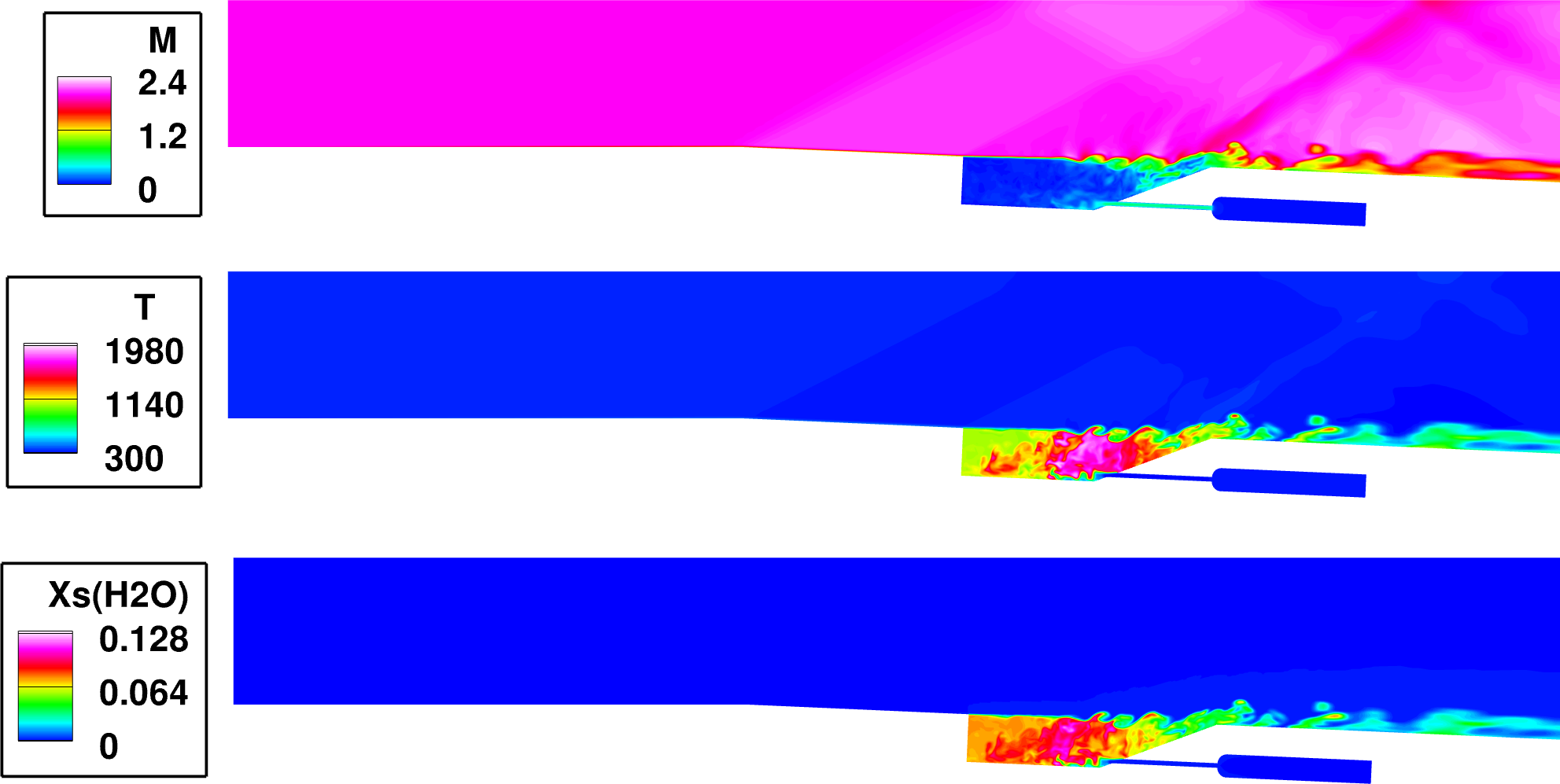Study on Two-dimensional Modeling of Combustion and Turbulence Fields for Aerospace Propulsion Systems
JAXA Supercomputer System Annual Report February 2024-January 2025
Report Number: R24EDA201J05
Subject Category: Aeronautical Technology
- Responsible Representative: Kazuyuki Nakakita, Aviation Technology Directorate, Fundamental Aeronautics Research Unit
- Contact Information: Shingo Matsuyama(matsuyama.shingo@jaxa.jp)
- Members: Kotaro Iguchi, Hideki Moriai, Shingo Matsuyama
Abstract
There is a strong need to incorporate LES that can reproduce combustion and turbulence phenomena with high fidelity into the design process in order to enhance the efficiency of the development of aerospace propulsion systems such as aero engines and rocket engines. However, LES is not widely incorporated into the design process in actual development because it requires three-dimensional analysis and is computationally very expensive. This study aims to reduce the dimension of combustion and turbulence LES, which inherently requires three-dimensional computation, through two-dimensional modeling. The goal is to achieve a two-dimensional LES and reduce the cost to a level where it can be used in the design of propulsion systems.
Reference URL
N/A
Reasons and benefits of using JAXA Supercomputer System
High-fidelity combustion LES data is required for modeling a combustor that is dominated by three-dimensional physical phenomena using a two-dimensional approximation, but combustion LES requires solving the governing equations for a large number of chemical species produced by chemical reactions as a three-dimensional unsteady problem. Such an analysis is computationally very expensive and cannot be performed without the use of a supercomputer.
Achievements of the Year
A three-dimensional analysis of a supersonic cavity combustion flow at Mach 2 with ethylene as fuel was performed by implicit LES (ILES) using a detailed reaction model with 22 chemical species. The spatial higher-order accuracy (third-order for scalar and fifth-order for velocity component) enabled us to capture the three-dimensional structure of supersonic cavity combustion with a relatively coarse grid of 2.27 million cells (Figure 1). The combustion LES was completed in about 48 hours per case using 66 nodes (3168 cores) of JSS3.

Fig.1: Supersonic cavity combustion flow obtained by ILES. Instantaneous contours of Mach number (top panel), temperature (middle panel) and H2O mole fraction (bottom panel) are shown.
Publications
- Oral Presentations
1) Taisei Miyoshi, Kotaro Munenaga, Shingo Matsuyama, Hideki Moriai, "Development of a Method for Predicting the Combustion Flow Field of a Scramjet Cavity Flame Holder and Validation through Schlieren Visualization Experiments", the 62nd Japanese Combustion Symposium, 2024.
Usage of JSS
Computational Information
- Process Parallelization Methods: MPI
- Thread Parallelization Methods: OpenMP
- Number of Processes: 450 - 1576
- Elapsed Time per Case: 72 Hour(s)
JSS3 Resources Used
Fraction of Usage in Total Resources*1(%): 0.31
Details
Please refer to System Configuration of JSS3 for the system configuration and major specifications of JSS3.
| System Name | CPU Resources Used(Core x Hours) | Fraction of Usage*2(%) |
|---|---|---|
| TOKI-SORA | 8466623.69 | 0.39 |
| TOKI-ST | 13917.30 | 0.01 |
| TOKI-GP | 0.00 | 0.00 |
| TOKI-XM | 0.00 | 0.00 |
| TOKI-LM | 0.00 | 0.00 |
| TOKI-TST | 0.00 | 0.00 |
| TOKI-TGP | 0.00 | 0.00 |
| TOKI-TLM | 0.00 | 0.00 |
| File System Name | Storage Assigned(GiB) | Fraction of Usage*2(%) |
|---|---|---|
| /home | 1048.50 | 0.71 |
| /data and /data2 | 11771.00 | 0.06 |
| /ssd | 10491.00 | 0.56 |
| Archiver Name | Storage Used(TiB) | Fraction of Usage*2(%) |
|---|---|---|
| J-SPACE | 2.76 | 0.01 |
*1: Fraction of Usage in Total Resources: Weighted average of three resource types (Computing, File System, and Archiver).
*2: Fraction of Usage:Percentage of usage relative to each resource used in one year.
ISV Software Licenses Used
| ISV Software Licenses Used(Hours) | Fraction of Usage*2(%) | |
|---|---|---|
| ISV Software Licenses(Total) | 6.28 | 0.00 |
*2: Fraction of Usage:Percentage of usage relative to each resource used in one year.
JAXA Supercomputer System Annual Report February 2024-January 2025


